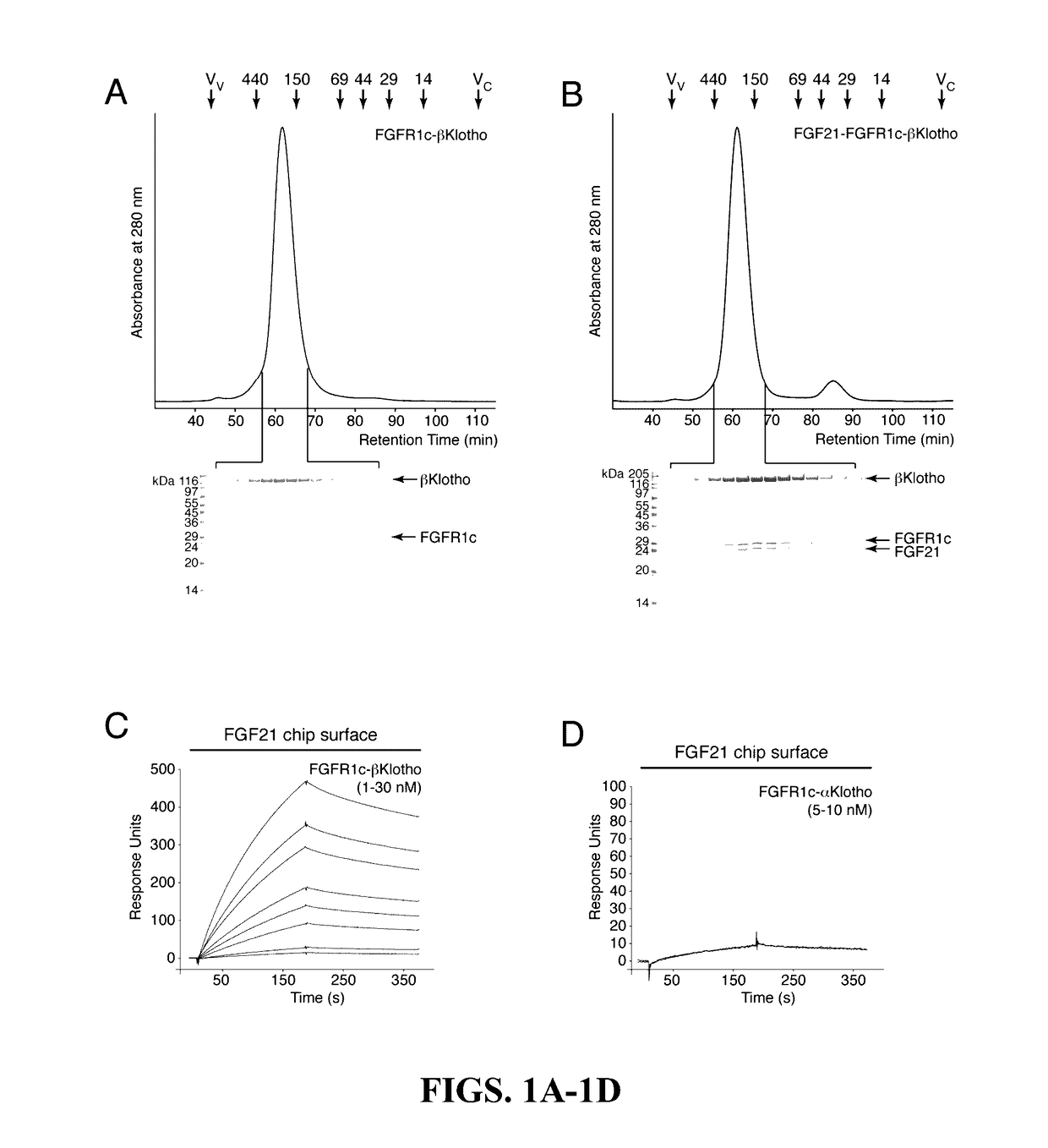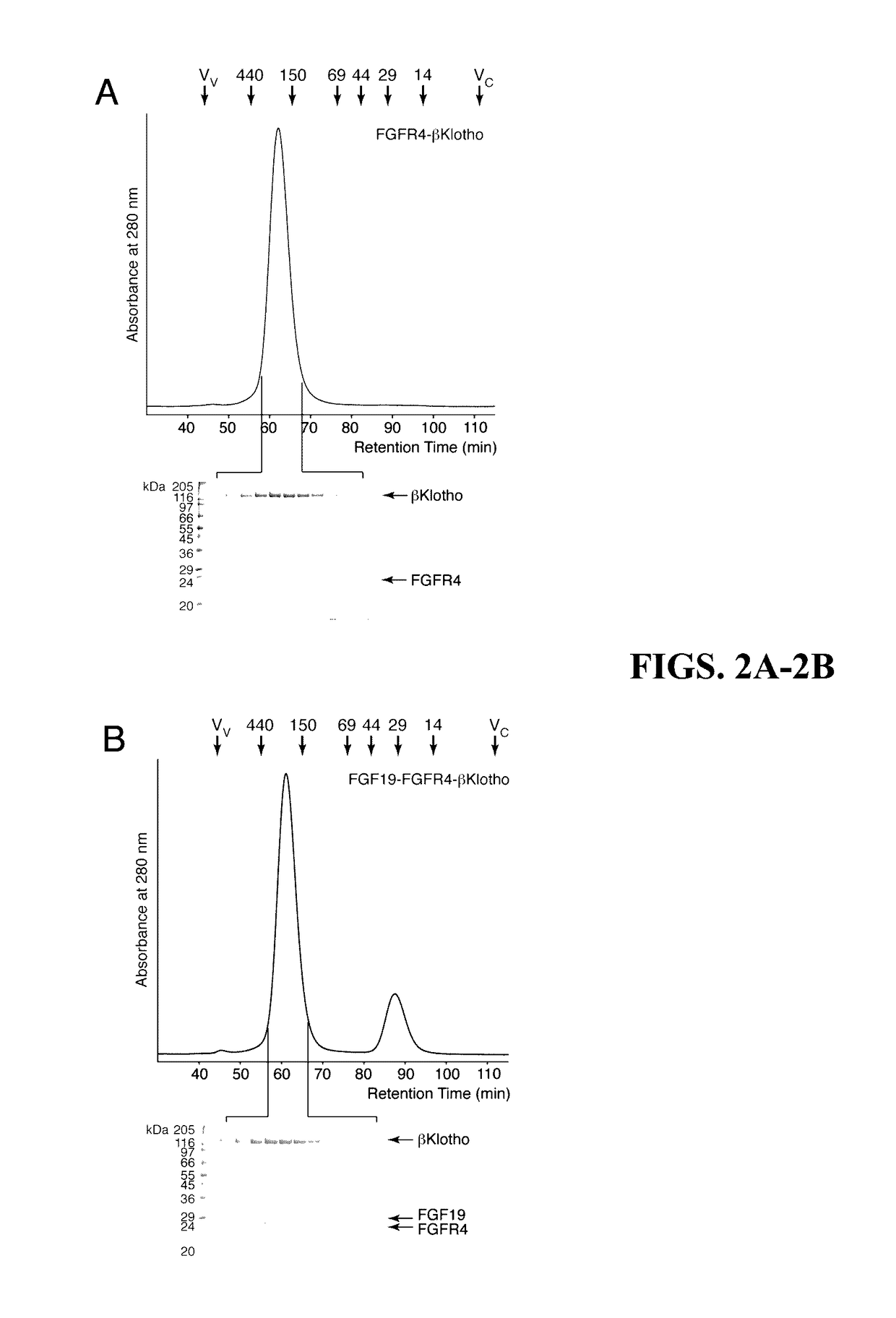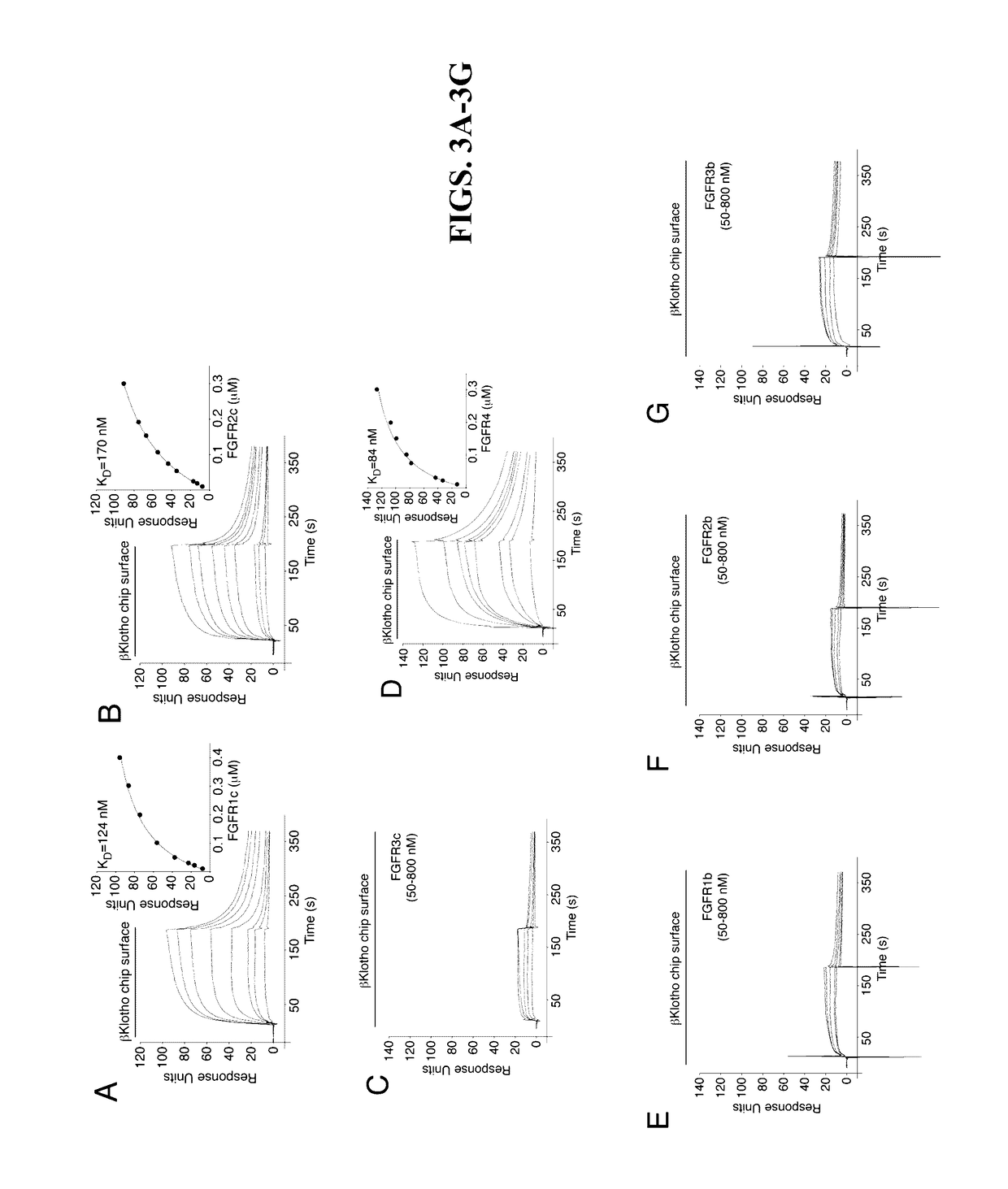Chimeric fgf21 proteins with enhanced binding affinity for beta-klotho for the treatment of type ii diabetes, obesity, and related metabolic disorders
a technology of fgf21 and fgf21, which is applied in the field of chimeric fgf21 proteins, can solve the problems of limited efficacy, limited tolerability, and increased irreversible damage to multiple organs, and achieves enhanced affinity for klotho, and increase the stability of fgf21
- Summary
- Abstract
- Description
- Claims
- Application Information
AI Technical Summary
Benefits of technology
Problems solved by technology
Method used
Image
Examples
example 1
-Receptors Use Different Mechanisms to Promote Binding of Endocrine FGF Ligands to Cognate FGFRs
[0151]The protein-protein interactions leading to the formation of the ternary complex between FGF23, FGFR1c, and αKlotho were previously characterized (Goetz et al., “Isolated C-terminal Tail of FGF23 Alleviates Hypophosphatemia by Inhibiting FGF23-FGFR-Klotho Complex Formation.”Proc Natl Acad Sci USA 107(1):407-412 (2010), which is hereby incorporated by reference in its entirety). It was shown that the ectodomain of αKlotho possesses a high-affinity binding site for the ligand-binding domain of FGFR1c but not for the FGF23 ligand (Goetz et al., “Isolated C-terminal Tail of FGF23 Alleviates Hypophosphatemia by Inhibiting FGF23-FGFR-Klotho Complex Formation,”Proc Natl Acad Sci USA 107(1):407-412 (2010), which is hereby incorporated by reference in its entirety), and that the preformed binary FGFR1c-αKlotho complex binds avidly to FGF23 (Goetz et al., “Isolated C-terminal Tail of FGF23 Al...
example 2
inding Site on FGF19 and FGF21 Maps to the C-Terminal Region of Each Ligand
[0154]It was next investigated which sequences of FGF19 and FGF21 bind to βKlotho. A clue to the location of the βKlotho binding site on FGF19 and FGF21 came from the previous finding that the binding site on FGF23 for the binary FGFR. αKlotho complex resides in the C-terminal region of FGF23 that follows the β-trefoil core domain (Goetz et al., “Molecular Insights into the Klotho-Dependent, Endocrine Mode of Action of Fibroblast Growth Factor 19 Subfamily Members.”Mol Cell Biol 27(9):3417-3428 (2007), which is hereby incorporated by reference in its entirety). Subsequent studies suggested that the same region in FGF19 and FGF21 mediates binding of these ligands to βKlotho. Specifically, it was shown that a chimera of FGF19 with the C-terminal tail of FGF21 was able to bind βKlotho and gradual deletion of C-terminal residues of FGF21 resulted in progressively reduced binding affinity for βKlotho (Wu et al., “...
example 3
FGF21 Share a Common Binding Site on βKlotho
[0155]Since both FGF19 and FGF21 bind to βKlotho, it raised the question whether these ligands bind to a shared site on βKlotho or whether each ligand has its own distinct binding site. To answer this, an SPR-based competition binding assay as described above was employed to examine whether the isolated C-terminal tail peptide of FGF19 can compete with full-length FGF21 for binding to βKlotho, and conversely, whether the C-terminal tail peptide of FGF21 can compete with full-length FGF19 for binding to βKlotho. As shown in FIG. 5F, FGF19C-tail effectively competed with FGF21 for binding to βKlotho. Similarly. FGF21C-tail was capable of inhibiting βKlotho binding to FGF19 (FIG. 5C). These data show that FGF19 and FGF21 have overlapping binding sites on βKlotho.
[0156]To provide biological evidence for the in vitro finding that FGF19 and FGF21 bind to a shared binding site on βKlotho, it was next examined whether the FGF9C-tail peptide and th...
PUM
| Property | Measurement | Unit |
|---|---|---|
| pharmaceutical composition | aaaaa | aaaaa |
| binding affinity | aaaaa | aaaaa |
Abstract
Description
Claims
Application Information
 Login to View More
Login to View More - R&D
- Intellectual Property
- Life Sciences
- Materials
- Tech Scout
- Unparalleled Data Quality
- Higher Quality Content
- 60% Fewer Hallucinations
Browse by: Latest US Patents, China's latest patents, Technical Efficacy Thesaurus, Application Domain, Technology Topic, Popular Technical Reports.
© 2025 PatSnap. All rights reserved.Legal|Privacy policy|Modern Slavery Act Transparency Statement|Sitemap|About US| Contact US: help@patsnap.com



